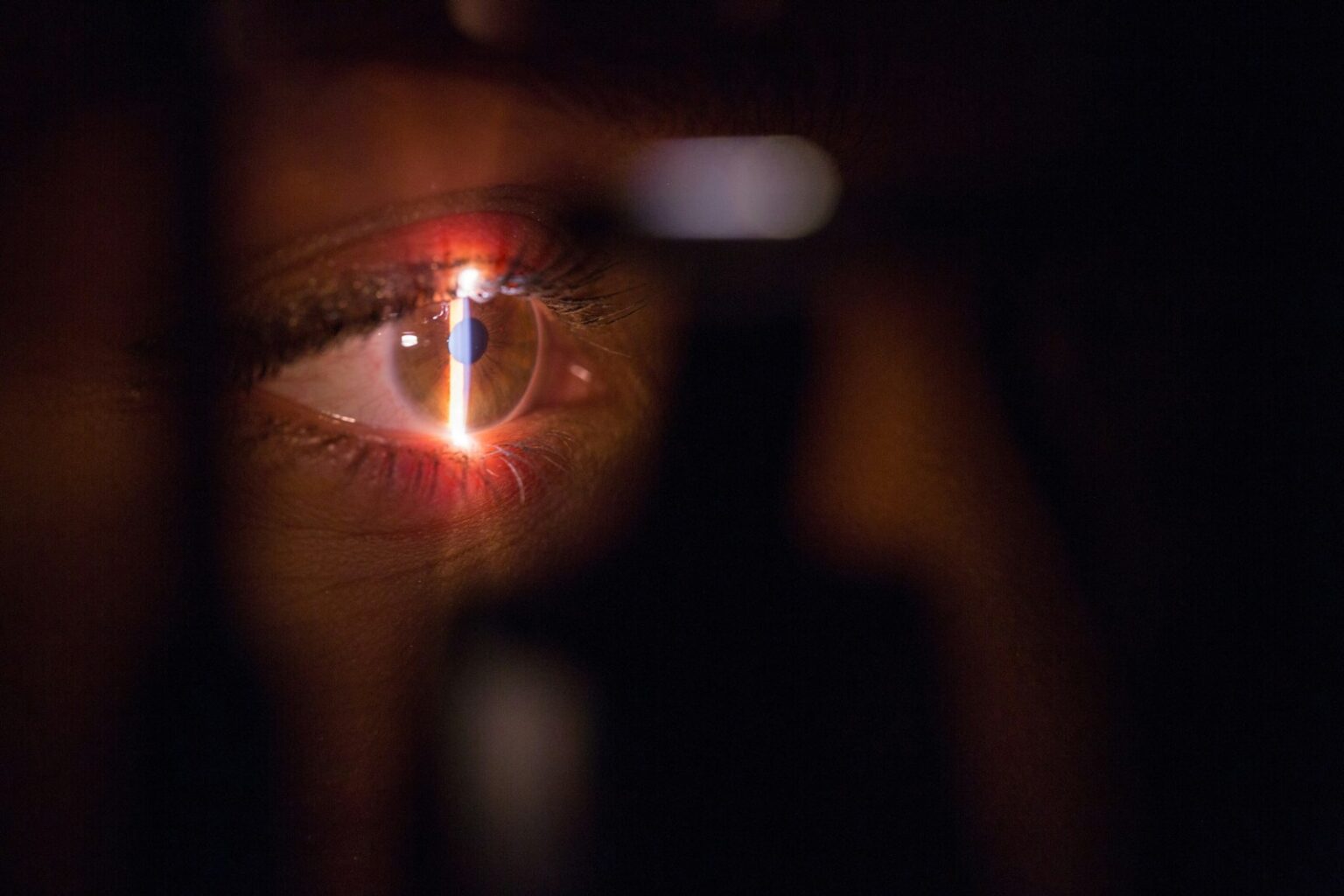LASIK or Laser-Assisted In Situ Keratomileusis is a surgical procedure intended to correct refractive errors or vision errors. There are other kinds of refractive surgical procedures, but LASIK is the most advanced. Although LASIK and PRK (Photorefractive Keratectomy) use the same type of laser, their procedures differ in how the stroma, the middle layer of the cornea, is exposed. In PRK, the top layer of the cornea is scraped to expose the stromal layer, while in LASIK, only a flap is cut in the layer and then folded back.
Some examples of vision errors are nearsightedness or myopia; farsightedness or hyperopia; and, astigmatism or distorted vision caused by irregularities in the cornea.
LASIK involves a two-step procedure. The first step consists in creating a micro-thin flap of corneal tissue using a disposable blade through a microkeratome or a laser, such as IntraLase. Throughout the procedure, a small area of the eye is left untouched at one end to maintain its attachment to the eye. The second step involves folding back the flap and using an excimer laser to treat the corneal tissue. The excimer laser corrects myopia by flattening the cornea, hyperopia by steepening the cornea and astigmatism by making the cornea more symmetrical.
In addition, LASIK also corrects presbyopia, a condition that often occurs with age. Presbyopia is the inability of the eye to see things clearly or to focus sharply on nearby objects. LASIK, however, can only correct one eye for clear distance vision and the other eye for clear near vision. This is called monovision.
The Excimer laser, which is the secret behind the procedure, was initially developed by IBM for use in computer chips. The technology utilises a cool beam of ultraviolet light, which means that most of the heat generated dissipates quickly. This cooling property makes the Excimer laser ideal for eye surgery because it can vaporise corneal tissue without damaging the eye tissue through heat.
And because it is initially developed with computers in mind, the laser is precise, with an accuracy of 0.25 microns. That is less than one one-thousandth of a millimetre. For most procedures, one needs only to remove or correct 50 microns of thickness, which is as thick as a single human hair.
Aside from being a safe procedure, LASIK also allows for rapid visual recovery and minimal post-operative discomfort, unlike other types of surgery. There is also a lower chance of corneal haze and scarring, as well as fluctuations in vision.
Like in any other surgery, LASIK entails some risks. Thus, before you decide to undergo this modern method of correcting vision problems, you may need to discuss various issues in length with your doctor, including pre- and post-operative care, risks, and possible outcomes.
Your medical condition and visual requirements for your work may also be considerations to discuss with your doctor. Even before that, you may need to check with your company administrator to see if you are allowed to undergo LASIK eye surgery; there may be company restrictions that you should be aware of before discussing LASIK with your doctor.
If your doctor decides, based on your condition and other factors affecting your life, that LASIK is not for you, there are other ways to correct vision problems. So, you need not despair.
Additionally, if your health condition and employment do not allow you to undergo laser surgeries like LASIK, you may opt to wear eyeglasses or contact lenses instead.
Do not allow your doctor, a friend or a family member to pressure you into undergoing LASIK surgery. It may help if you can discuss with your doctor the following:
Is LASIK good for you?
Risks of the surgery
Before, during and after the procedure
IS LASIK GOOD FOR YOU?
LASIK may be good for you if you are ready to face consequences such as complications and possible risks of the procedure. Some people opt not to undergo LASIK because of the risks involved.
You may undergo LASIK surgery if it will not jeopardize your career. Some jobs prohibit refractive procedures, thus it is a good recommendation that you check with your employer to see if you may be allowed to undergo the procedure.
LASIK is quite an expensive procedure; if you can afford it, then, by all means undergo the procedure after considering the risks involved.
LASIK may be performed if you are 18 years old and above, no doctor will perform the surgery to anyone below 18 years old.
RISK FACTORS INVOLVED IN LASIK SURGERY.
Patients may loose some lines of vision. Because of the procedure, you may develop vision problems that eyeglasses, contact lenses or surgery may not be able to correct. This is a major risk, which you may need to consider.
Patient may develop severe dry eye syndrome. As a result of the surgery, the eye may not be able to produce enough tears to keep the eye moist and comfortable.
For farsighted patients, good result of the procedure may diminish as you age.
Monovision surgery may result in poorer quality vision and a decrease of depth perception. Monovision is where you use one eye to see images nearby and the other eye to see far images. This may result in poor quality vision that may be permanent.
BEFORE, DURING AND AFTER THE PROCEDURE
If you wear contact lenses, you may need to stop wearing them before your baseline evaluation. If you are a hard lens user, you may need to stop wearing them at least four weeks before the baseline evaluation.
Stop using creams, lotions, makeup and perfumes the day before the procedure.
During the surgery, you may need to arrange for somebody to drive you to the doctor and to bring you home after the surgery.
You may also need somebody to assist you because you will feel discomfort in the eye area such as burning or itching. Mild pain may also be present and if you want, you may ask your doctor for mild pain reliever.
24 to 48 hours after the surgery, you may need to visit your doctor. Regular check-ups may also be necessary during the first six months after the procedure.
During this period, your vision may not still be stable but it will wear off in time.
Finally, after considering the risks and the possible outcome of the procedure, you may want to think it over if LASIK surgery is what you want. Do not allow external pressure to force you into undergoing the procedure, you need to decide for yourself after considering all the factors mentioned.




